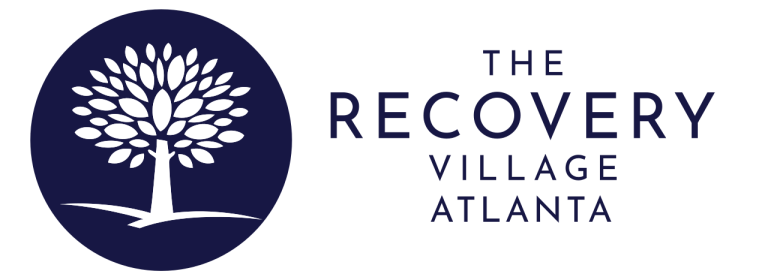After serving in the military, some veterans find solace in using substances as a response to PTSD symptoms. Fortunately, treatment options are available that tackle both addiction and PTSD concurrently.
Transitioning to civilian life introduces a plethora of hurdles stemming from military experiences. Among these hurdles, the heightened susceptibility to post-traumatic stress disorder (PTSD) often leads to substance misuse. While the coexistence of PTSD and substance abuse can be an expected outcome of military service, effective treatment offers a roadmap to recovery.
Unraveling the Complexity of PTSD
Post-Traumatic Stress Disorder (PTSD) is a mental health condition triggered by exposure to a traumatic event. It can originate from direct exposure to trauma, such as facing threats with weapons, or from bearing witness to or hearing about traumatic incidents involving others. Individuals with PTSD experience intrusion symptoms, including flashbacks, unwelcome memories linked to the trauma, nightmares, and intense psychological reactions triggered by reminders of the event.
PTSD symptoms include efforts to avoid memories or triggers associated with the trauma, as well as shifts in mood and behavior. Those contending with PTSD may consistently display negative emotions, assign blame for the traumatic event, or withdraw from social interactions. Experiencing positive emotions like happiness becomes a challenge, while unexpected bursts of anger, risky behaviors, and sleep disruptions may surface.

It's time to get your life back.
If you are struggling with addiction and co-occurring mental health, our expert team is here to guide you every step of the way. Don’t wait— reach out today to take the first step toward taking control of your life.
The Intersection of PTSD and Substance Abuse in Veterans
Veterans wrestling with PTSD are at an elevated risk of developing substance use disorders (SUD) or addictions. When PTSD and substance use disorder coexist, it’s referred to as co-occurring disorders. Research reveals that almost 50% of individuals with PTSD have co-occurring substance use disorders. Furthermore, data from the Veterans Administration indicates that over 2 out of 10 veterans with PTSD also live with substance use disorder.
The Connection Between Alcohol Addiction and PTSD
For veterans managing PTSD, alcohol might serve as a temporary escape from negative emotions or distressing memories. However, as tolerance builds and the effects of alcohol diminish, individuals may require larger quantities to achieve the same effects. Over time, untreated PTSD heightens the risk of alcohol addiction and contributes to declining mental health. Research suggests that as high as two-thirds of veterans seeking treatment for alcohol addiction at the VA also have PTSD.
Investigating Drug Addiction and PTSD
Veterans who have PTSD are also prone to falling into drug addictions. Research involving veterans from conflicts such as Iraq and Afghanistan suggests that male veterans are susceptible to using drugs to self-medicate PTSD symptoms. In the case of female veterans, drug abuse is linked to future PTSD symptoms, indicating distinct gender differences in the interaction between drug addiction and PTSD. Combat-wounded veterans may be particularly susceptible to opioid addictions due to potential dependence on prescription painkillers for managing chronic pain.
Identifying PTSD Triggers and Symptoms in Veterans
Veterans dealing with PTSD often encounter triggers that activate their symptoms. Triggers can be events or memories that initiate the onset of PTSD symptoms. For instance, loud noises reminiscent of explosions or gunfire can trigger symptoms like bursts of anger, heightened startle responses, or behaviors such as substance misuse. When PTSD symptoms manifest, they typically fall into the following categories:
Intrusion Symptoms
- Intrusive thoughts tied to the traumatic event
- Disturbing nightmares related to the trauma
- Flashbacks reenacting the traumatic event
- Intense stress triggered by reminders of the trauma
- Physiological reactions upon encountering reminders of the trauma (e.g., elevated heart rate)
Avoidance Symptoms
- Attempts to steer clear of triggers associated with the traumatic event
- Endeavors to suppress distressing memories or thoughts about the event
Shifting Mood Patterns
- Inability to recall specific details of the traumatic event
- Distorted negative thoughts, such as perceiving the world as unsafe
- Assigning blame on oneself or others for the event
- Consistently experiencing negative emotions like shame, guilt, anger, and fear
- Loss of interest in previously enjoyed activities
- Feeling emotionally detached from others
- Inability to experience joy, happiness, or other positive emotions
Changes in Arousal and Reactivity
- Spontaneous bursts of anger without warning
- Engaging in self-destructive behaviors
- Hyper-vigilance towards surroundings
- Heightened startle responses
- Difficulty concentrating
Effective Approaches for Veterans with Co-Occurring PTSD and SUD
Effectively addressing PTSD and substance abuse in veterans entails comprehensive strategies that tackle both conditions in unison. Several effective approaches are employed to treat these conditions:
- Therapies: Talk therapy, including cognitive processing therapy (CPT) and prolonged exposure (PE), plays a pivotal role in treating co-occurring PTSD and SUD in veterans. These cognitive behavioral therapies (CBT) offer significant benefits.
- Medications: Medications can assist veterans in managing symptoms of both PTSD and addiction. Antidepressants are frequently prescribed to alleviate PTSD symptoms. Medications can also aid in managing withdrawal symptoms and cravings for drugs and alcohol.
- Group Therapy: Group therapy is a fundamental component of treatment programs for veterans with PTSD. Some treatment centers offer groups tailored specifically for trauma survivors, including groups exclusively for veterans.
- Inpatient Rehabilitation: In specific cases, veterans may benefit from embarking on their recovery journey with inpatient rehabilitation. These programs allow veterans to reside within a treatment facility, providing a controlled environment and separating them from triggers during treatment.
Extending Support to Veterans with Co-Occurring PTSD and SUD
If you know a veteran grappling with both PTSD and addiction, your support can be transformative. Here’s how you can make a meaningful impact:
- Educate Yourself: Familiarize yourself with their symptoms and triggers. This knowledge empowers you to offer additional support during episodes of heightened symptoms and aids in identifying distressing situations so you can help the veteran evade triggers.
- Exercise Patience: Recognize that living with PTSD can result in shifts in behavior and mood. Practice patience and empathy, understanding that these shifts stem from their mental health condition and not from any actions on your part.
- Encourage Seeking Treatment: Veterans with co-occurring PTSD and SUD achieve optimal outcomes when they engage in treatment. Encourage them to seek professional help and provide support in scheduling and attending appointments.
Additional Resources for Veterans
For veterans seeking additional resources on PTSD, explore the following options:
- VA Benefits Hotline: Reach out to the toll-free number 855-586-2889, available Monday to Friday from 8:00 a.m. to 9:00 p.m. ET.
- The VA Mental Health Page: Access the mental health page on the VA’s website to learn about VA programs and treatment choices.
- National Center for PTSD: Gain access to research publications and information about PTSD treatment through the National Center for PTSD’s website.
- Afterdeployment.org: Explore expert information about mental health treatment after deployment on the Afterdeployment.org website. This resource provides guidance on recognizing the need for assistance.










